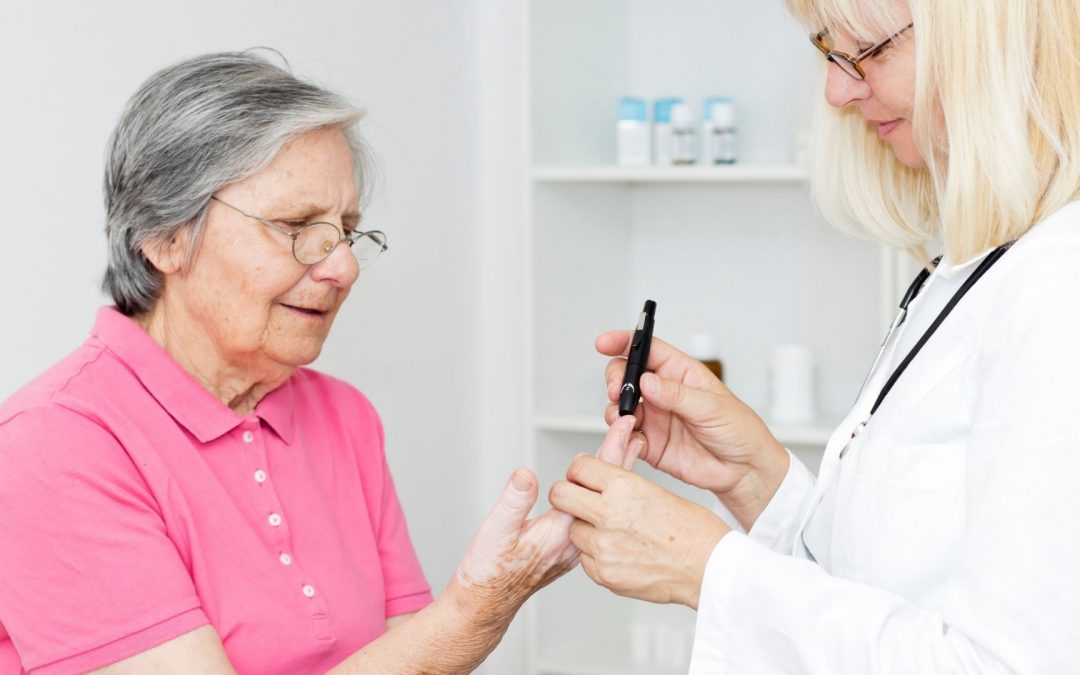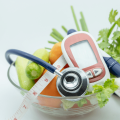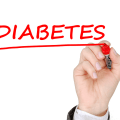Table of Contents
Whether you have been newly diagnosed, or have been battling with type 2 diabetes for a time now, or are supporting a loved one or a friend, you have come to the perfect place. This is everything you need to know to comprehend Type 2 Diabetes, which will greatly advance our knowledge and educate you along with this medical matter. Without further interruption, let’s hop right into the path of a deeper understanding of type 2 diabetes.
Type 2 Diabetes Stats
This is a form of diabetes mellitus and is one of the better-known chronic medical conditions prevalent worldwide. In the United States alone, 30.3 million, or over 10% of the US population, have diabetes and most are dealing with this type. It is the most common form of diabetes, and it translates to your body not utilizing insulin properly.
It is a disease that manifests when your blood glucose or blood sugar is too high. Blood glucose is our main source of energy, and it mainly yields from the food we eat. Insulin, a hormone created by our pancreas, then helps glucose into our cells to be utilized for energy. When you have acquired this disease, your body doesn’t make enough insulin, or it is dreadful to use it properly. Then the glucose stays in your blood, and it does not reach your cells. It means there is too much sugar circulating in the bloodstream that then creates symptoms affecting the circulatory, nervous as well as immune systems.
There is, unfortunately, a cure for this condition, but losing weight, eating well together with exercising are the three main proponents of managing the disease well and ensuring those affected by it live their life as normal as possible.
Type 1 vs. Type 2 Diabetes: How Do They Differ?

Discussing Type 1 diabetes, here the pancreas is incapable of producing any insulin at all. In Type 2, the pancreas does not bring on sufficient amounts of the insulin hormone, and the insulin it is making does not always work, as it normally should. Type 2 diabetes usually impacts older adults, though it has increasingly become more common in children. Type 2 diabetes usually manifests in children and young adults, although people of all ages can get it.
Causes of Type 2 Diabetes
Your pancreas produces a hormone called insulin. It supports your cells turning glucose, a kind of sugar, from the food you consume into energy. Individuals with type 2 diabetes create insulin, but their cells don’t use it as well as they should. At foremost, your pancreas creates more insulin to try to get glucose into your cells. But sooner or later, it can’t be maintained, and the glucose builds up in your blood as an alternative.
Most common because we often hear that is associated with this condition is unhealthy wanting habits or the dilemma of being overweight means you will develop type 2 diabetes. While these two are risk factors, the cause of the disease is deemed much more complex.
Type 2 diabetes has a strong genetic component, but our daily habits matter too and if we consciously choose to lead a healthy lifestyle, diabetes is to one avoid, or put it way off.
Usually, a combination of one or two things below causes type 2 diabetes:
Genes
Over the advancement of medicinal technology, scientists have found that different bits of DNA are capable of affecting how our body makes insulin.
Extra weight
Extra weight accounts for causing insulin resistance. This is especially true if you carry your extra funds around your middle, called visceral fat. Visceral fat is linked to having resistance to insulin
Metabolic Syndrome
People acquiring insulin resistance also often have a group of conditions, including high blood sugar, high blood pressure, together with high cholesterol and triglyceride. Moreover; linked to extra fat circulating around their waist.
Bad communication residing between cells
There are cases where cells send the wrong signals or do not bother to pick up messages correctly. These problems then affect how your cells ought to utilize insulin or glucose. Eventually, this unfortunately blossomed to type 2 diabetes.
Broken beta cells
Lastly, if the cells that are accountable for causing insulin to send out the wrong amount of it at the inaccurate time, blood sugars get thrown off. This causes high blood sugar, which damages the cells too.
Risk Factors for Type 2 Diabetes
There are also certain things and variables that will heighten your risk of getting type 2 diabetes. Below is the complete list, and the more of these apply to you, the higher your chance of acquiring and being diagnosed with it.
- Age.45 years and older individuals are greatly susceptible to type 2 diabetes.
- Family. If you have a parent, sister or a brother diagnosed with diabetes, you may acquire it too.
- Ethnicity. Being African American, Alaskan Native, Native American, as well as being Asian American, Hispanic or Latino, or Pacific Islander American can make you vulnerable to type 2 diabetes.
Health Related Risk Factors
- Prediabetes
- Heart and blood vessel disease
- High blood pressure, even if it’s treated and under restrain
- Low HDL (“good”) cholesterol
- High triglycerides
- Being overweight or obese
- Having a baby who mattered more than 9 pounds (4.08 kilogram)
- Gestational diabetes while you were pregnant
- Polycystic ovary syndrome (PCOS)
- Depression
Lifestyle – Related Risk Factors That Heighthen Risk for Diabetes:
Getting little or no exercise
Regular physical activities help your cells to further adapt in responding to insulin.
Smoking
Smoking causes oxidative stress that causes cell damage. This further leads to inflammation, and inflammation greatly correlates to diabetes. Furthermore, high levels of nicotine present in cigarettes lessen the effectiveness insulin has.
Stress
High levels of stress hormones interfere with insulin-producing hormones, from working properly, thus it will reduce insulin intake that will open pathways for the development of type 2 diabetes.
Sleeping too little or too much
Lack of sleeping too much causes less release of insulin and while you are wasting time for slumber or getting too little of it, it contributes to releasing of cortisol that disrupts the pancreas from working properly.
Eating a lot of highly processed meals and foods
These highly processed foods have a lot of hidden sugar as well as refined carbs, the two of which love type 2 diabetes. Thus, if you are living your life in a grab-and-go eating style, you must be concerned as it heightens your risk for acquiring type 2 diabetes.
Too much TV
Physicians note how watching too much TV can open you up to a higher risk of type 2 diabetes, obesity, as well as other ailments.
Early on Signs and Symptoms Prevalent in Type 2 Diabetes
These are signs and symptoms that can come slowly.
More thirst
This is due to sugar building up in your blood and kidneys working overtime to get rid of it. This then pulls fluids residing in your tissue and makes you dehydrated, thus the frequent thirst.
Experiencing hunger frequently
This is due to how the disease can stop glucose from getting to your cell, you then feel hungry even after you have eaten.
Peeing often
This is due to your kidneys getting rid of extra sugar residing in your system.
Having a dry mouth
Dehydration combined with peeing a lot can restrain moisture that you have in your mouth too.
Weight loss, amidst not trying
When you lose a lot of sugar because of frequent urination, you are losing calories too. You are susceptible to losing weight even though you are eating as usual.
Fatigue
When your body is incapable of using energy from your food, this then becomes weakness and tiredness. If you are dehydrated, you’ll feel tired too.
Blurry vision
High blood sugar makes way for challenging focus.
Occasional headaches
In addition to blurry vision, high blood sugar can occasionally make your head hurt.
Loss of consciousness
After conducting exercise, or if you skip a meal, or take too many pills and medication, your blood sugar can become too low enough to make you lose consciousness.
Infections or having sores that takes too long to heal
High blood sugar that causes slow blood flow can make it harder for our body to heal at our wounds and aches faster.
Tingling hands as well as feet
Type 2 diabetes is linked to our nerves, thus it also damages it by making tingling sensations that often are uncomfortable.
Red, swollen and tender gums
Dealing with type 2 diabetes opens you up for higher likelihood of getting infections in your gums and the bones that hold your teeth in place. Your gums may get septic or pull off away from your teeth. Your teeth might become loose.
Complications That May Arise Because of Type 2 Diabetes
There are various detrimental ways neglected type 2 diabetes can affect our body. Thus, placing the emphasis on getting your blood pressure under control is really vital, to avoid these serious conditions:
Hypoglycemia
It accounts if your blood sugar falls less than 50 milligrams per deciliter, that unfortunately can lead to accidents, coma,, and fatality.
Hyperglycemia
It is when your blood sugar goes above 180 to 200 mg/dL. This triggers to give you in your heart, nerve, kidney alongside vision problems. Avoid treating this at all costs, and it will also lead to fatality.
Over time, it is known that people with type 2 diabetes may also develop other health problems, such as:
Diabetic ketoacidosis
When a person does not have enough insulin in his system, blood sugar spikes and the body breaks down fat for energy. This comes from toxic acids called ketones, which also build up and spill in your urine, which leads to coma and death if left untreated.
Heart and blood vessels disorders
People suffering from type 2 diabetes are heightened in risk of high blood pressure and high cholesterol, which plays a rather important role in heart diseases. Having high blood sugar also damages blood vessels and the nerves responsible for controlling your heart.
High blood pressure
Type 2 diabetes doubles the likelihood of high blood pressure, which also makes people more likely to have heart disease or stroke.
Nerve damage or diabetic neuropathy
Tingling and numbness, often manifesting in feets and legs. This can also affect the digestive system, alongside the urinary tract, blood vessels, and the heart.
Eye damage
There are three eye damage that can arise because of type 2 diabetes.
- Glaucoma, the buildup of pressures in the eye
- Cataracts, cloudiness of eye lens
- Retinopathy, damaged blood vessels residing in the eye
Kidney disease
This is where the person diagnosed with a kidney may wear off from working harder to filter out extra sugar along with other waste products in the blood.
Hearing problems
Having acquired untreated type 2 diabetes allows for nerve damage in the body.
Skin problems
- Infections. You’re more potent to get bacterial and fungal infections.
- Itching. Casualties comprise infections, dry skin, and poor circulation. You might observe it on your lower legs.
- Acanthosis nigricans. These velvety darker regions can appear on your neck, armpits, groin, hands, elbows, and knees.
- Diabetic dermopathy. Alterations to small blood vessels that glimpse like red or brown scaly patches. They often display up on your feet and the fronts of your legs.
- Necrobiosis lipoidica diabeticorum. This rare ailment also affects your blood vessels. It begins as a dull, red, expanded area, but winds up as a shiny mark with a violet border. Your skin could itch or break open. Women are more probable to acquire this than men.
- Allergic reactions. You could get these in reaction to insulin or some other diabetes medication.
- Diabetic blisters(bullosis diabeticorum). These sores look like burn blisters and can reveal on the rears of your fingers, hands, toes, feet, and sometimes legs or forearms.
- Disseminated granuloma annulare. You might obtain brown, as well as skin-colored rings or either arc-shaped lifted regions on your fingers, ears, or trunk.
Brain problems
High blood sugar can damage one’s brain by putting on higher risk for dementia and Alzheimer’s.
Management and Treatment of Type 2 Diabetes
How do you manage type 2 diabetes?
Blood sugar
Persons with type 2 diabetes are to invest in a blood glucose meter, or continuous glucose monitoring, to aid them in meeting their blood sugar target. Health care practitioners may also recommend continuous A1c tests, oral medications, insulin therapy, alongside injectable noninsulin medications for diabetes.
Blood pressure
Lowering blood pressure can be done by not smoking, exercising regularly as well as abiding by a healthy, well-balanced diet. There are also blood pressure medications such as beta-blockers and ACE inhibitors doctors may provide.
Cholesterol
This is managed by following a meal plan that aids in low saturated fat, trans fat, salt alongside sugar. Doctor can also supplement statins, a medicinal drug that lowers cholesterol
Medications for type 2 diabetes
Management of type 2 diabetes is best looking like, taking medications alongside diet and adequate exercise. Physicians often recommend oral diabetes medications. The pills or liquids that you take in by mouth. For instance, a medicine called metformin assists in controlling the glucose present in your system that your liver produces.
A person diagnosed with the disease can also take insulin to help their body use sugar in an efficient manner. Insulin comes in a variety of forms:
Injectable insulin
This is insulin that is a shot that you give to yourself. Most people inject insulin into a fleshy part belonging to their body, such as their belly. Injecting insulin is accessible via vial, or either an insulin pen.
Inhaled insulin
Insulin is inhaled through the mouth. It is used for convenience and is available in a rapid-acting form.
Insulin pumps
Insulin pumps are those that deliver insulin continuously, similar function as what the pancreas would do. Pumps release insulin through a tiny and thin tube, a cannula. The pumps then are being connected to a computerized device that lets the person decide how he will control the dose and frequency of every insulin that will go on his body.
Lifestyle modifications for individuals with type 2 diabetes
Lifestyle changes are also often advised for people having type 2 diabetes. This Is because betterment always almost lies in our daily habits. Thus, these are the vital lifestyle modifications persons with type 2 diabetes must abide by for wellness.
- Focusing on eating only as much as your body needs.
- A 30-minute exercise on weekdays to help bring down blood sugars r, ease stress, and aid in healthy weight loss.
- Quitting smoking, minimizing alcoholism and not taking any addictive drug, or engaging in substance abuse
- Managing stress and prioritizing mental health
- Getting adequate sleep and abiding by a sleep hygiene
- Working their days on planners and to-do lists to avoid fatigue and to breed familiarity. This is especially helpful for turning medication as cues rather than obligations.
- Engaging in not physically demanding work
- Having healthy coping mechanisms for type 2 diabetes such as having great enjoyable and healing habits
- Regular doctor appointments
- Having to creatively find ways to enjoy food such as making alternative for healthier alternative for cookies
- Staying hydrated at all times
Diet for persons diagnosed with type 2 diabetes
- Lean proteins. Lean meats are those proteins low in saturated fats. People with type 2 diabetes are advised to have chicken, egg, seafood as well as plant based protein such as tofu, nuts, and beans as the foundations of their diet.
- Minimally processed carbohydrates. Refined carbs such as white bread, pasta and potato are lessened, or cut off as much as possible. This is because they can cause blood sugar to increase quickly. Patients, as an alternative, will just be asked to choose carbs that cause a more gradual blood sugar increase. These carbs are whole grains such as oatmeal, brown rich and whole grain pastas.
- No added salt. Too much sodium or salt contributes to hechting blood pressure. Lowering sodium as a result, by avoiding processed food will help aid in stabilizing the blood pressure promoting wellness. This is done by avoiding processed foods, or those canned and packaged goods. For instance, choosing salt free spices and healthy oils, instead of leaning on salad dressings.
- No added sugar. It is not helpful to intake more and more sugar as it will worsen blood sugar levels. Avoidance of sugary foods and drinks such as pies, cakes as well as sodas are vital for people battling type 2 diabetes.
- No-starch vegetables. Vegetables that are lower in carbohydrates prevent sudden and unpredictable blood sugar spikes. Broccoli, carrots as well as cauliflower are some of the vegetables that people with type 2 diabetes should lean on more often.
Prognosis of Type 2 Diabetes
The prognosis of this disease greatly depends on several variables, such as duration of the disease, state of the disease together with genetic factors. Physicians affirmed that if you have poorly controlled diabetes, and it has been going on for a long time, the greater risk you have for complications such as heart disease and neuropathy.
Unfortunately, those people diagnosed with type 2 diabetes tend to have a shorter lifespan, as compared to people living without this health condition. Rather than be hopeless about the ugly truth, people with this condition must not lose hope and be statistic. Receiving a prompt diagnosis for type 2 diabetes can still help them to put their health on track and increase likelihood of wellness while decreasing potency for complications.
Conclusion
While Type 2 Diabetes is a disease that really brings suffering to those living with it, that does not mean that the path of healing is not bright enough. Indeed, if you take good care to manage your blood sugar by following the management and treatment plan for this condition, you will find access to a quality life capable of doing things you really want to do.






 I love to write medical education books. My books are written for everyone in an easy to read and understandable style.
I love to write medical education books. My books are written for everyone in an easy to read and understandable style.